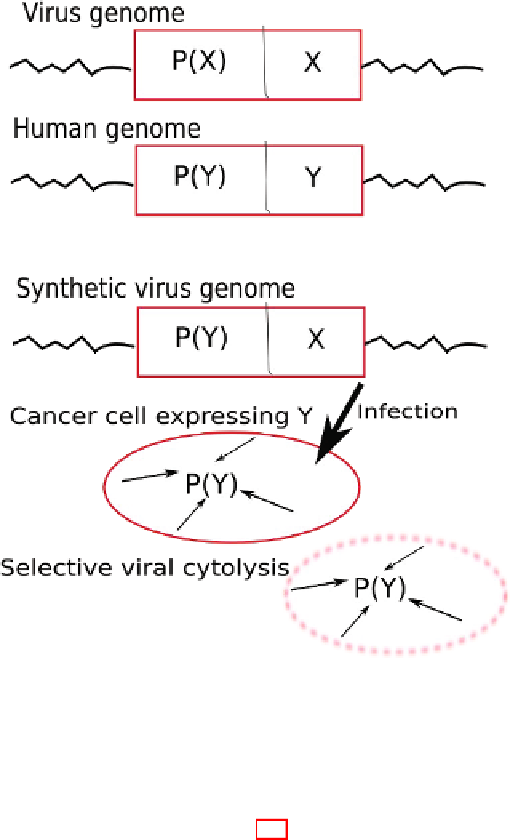Information Technology Reference
In-Depth Information
Fig. 4.9
The mechanism of oncolytic gene therapy
A
infects
cancer cells, then the biomolecular setting of these cells makes active P(Y) that pro-
motesX.Thismeansthatvirus
promoting
Y
is not active in these cells. But, when the engineered virus
A
become aggressive and its destructive activity
kills the cancer cells hosting it (see Fig. 4.9). Of course, this is only an ideal be-
havior, but the logic of this mechanism, apart from its enormous clinical interest,
discloses general principles of a crucial process of life.
In the case of clinical applications, unfortunately the expression of gene Y is not
exclusive of cancer cells. A way for improving the selectivity of viral attack [136]
is based on post-transcriptional modification, by using the mechanism of RNA si-
lencing [119, 153, 130] of small fragments of RNA that interfere with transcripts
(by pairing with portions of them) by contrasting or blocking the translation process
of mRNA into proteins. In fact, let us choose some micro RNAs (miRNA) that are
specific to some cells, say liver cells, which we want to protect from the virus attack,
but where Y is produced, thus P(Y) is active. If many copies complementary to these
RNA strands are inserted in the 3
-UTR region (Untranslated Terminal Region) of
the gene X of
A
, even if the transcript of X is translated when
A
is in the liver cells



